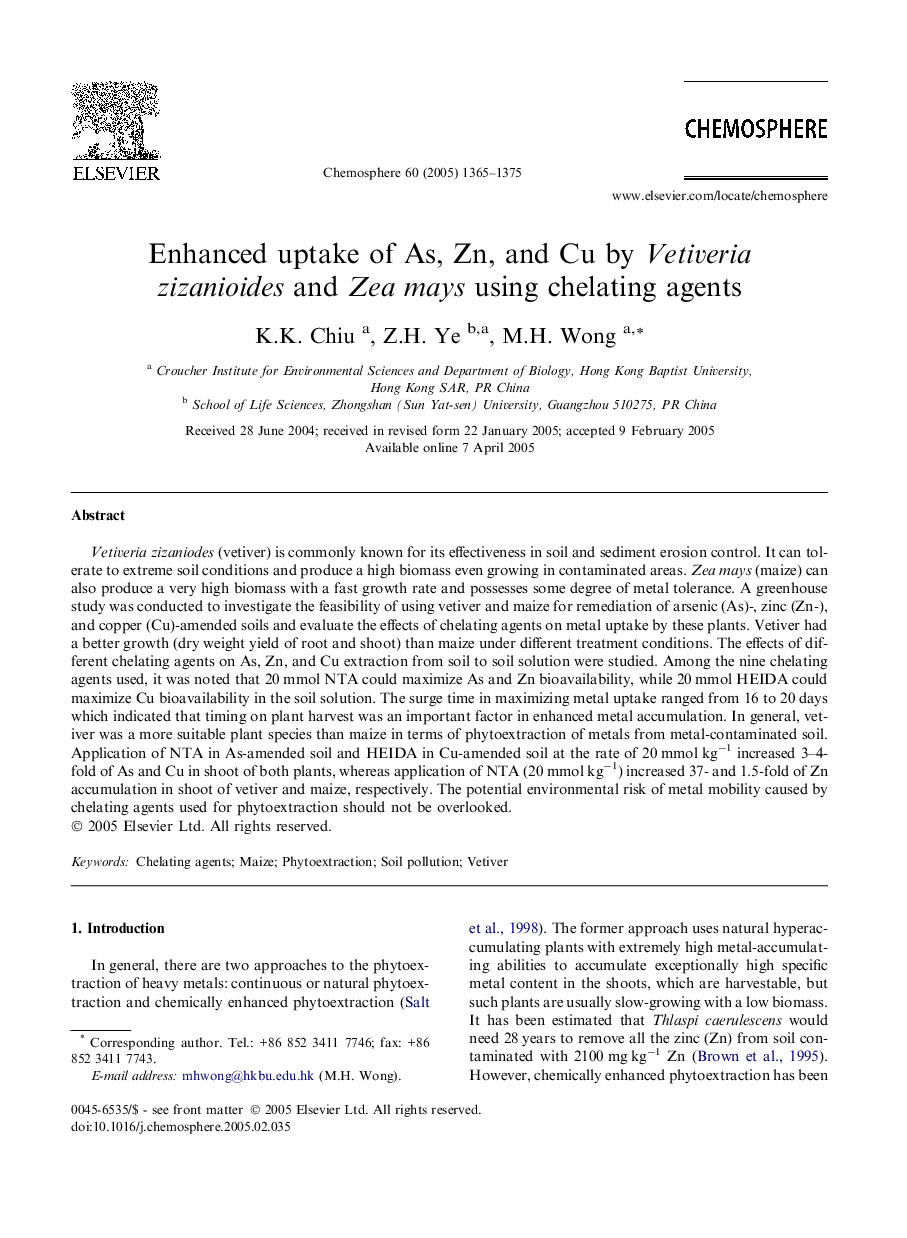| Article ID | Journal | Published Year | Pages | File Type |
|---|---|---|---|---|
| 9451228 | Chemosphere | 2005 | 11 Pages |
Abstract
Vetiveria zizaniodes (vetiver) is commonly known for its effectiveness in soil and sediment erosion control. It can tolerate to extreme soil conditions and produce a high biomass even growing in contaminated areas. Zea mays (maize) can also produce a very high biomass with a fast growth rate and possesses some degree of metal tolerance. A greenhouse study was conducted to investigate the feasibility of using vetiver and maize for remediation of arsenic (As)-, zinc (Zn-), and copper (Cu)-amended soils and evaluate the effects of chelating agents on metal uptake by these plants. Vetiver had a better growth (dry weight yield of root and shoot) than maize under different treatment conditions. The effects of different chelating agents on As, Zn, and Cu extraction from soil to soil solution were studied. Among the nine chelating agents used, it was noted that 20 mmol NTA could maximize As and Zn bioavailability, while 20 mmol HEIDA could maximize Cu bioavailability in the soil solution. The surge time in maximizing metal uptake ranged from 16 to 20 days which indicated that timing on plant harvest was an important factor in enhanced metal accumulation. In general, vetiver was a more suitable plant species than maize in terms of phytoextraction of metals from metal-contaminated soil. Application of NTA in As-amended soil and HEIDA in Cu-amended soil at the rate of 20 mmol kgâ1 increased 3-4-fold of As and Cu in shoot of both plants, whereas application of NTA (20 mmol kgâ1) increased 37- and 1.5-fold of Zn accumulation in shoot of vetiver and maize, respectively. The potential environmental risk of metal mobility caused by chelating agents used for phytoextraction should not be overlooked.
Related Topics
Life Sciences
Environmental Science
Environmental Chemistry
Authors
K.K. Chiu, Z.H. Ye, M.H. Wong,
